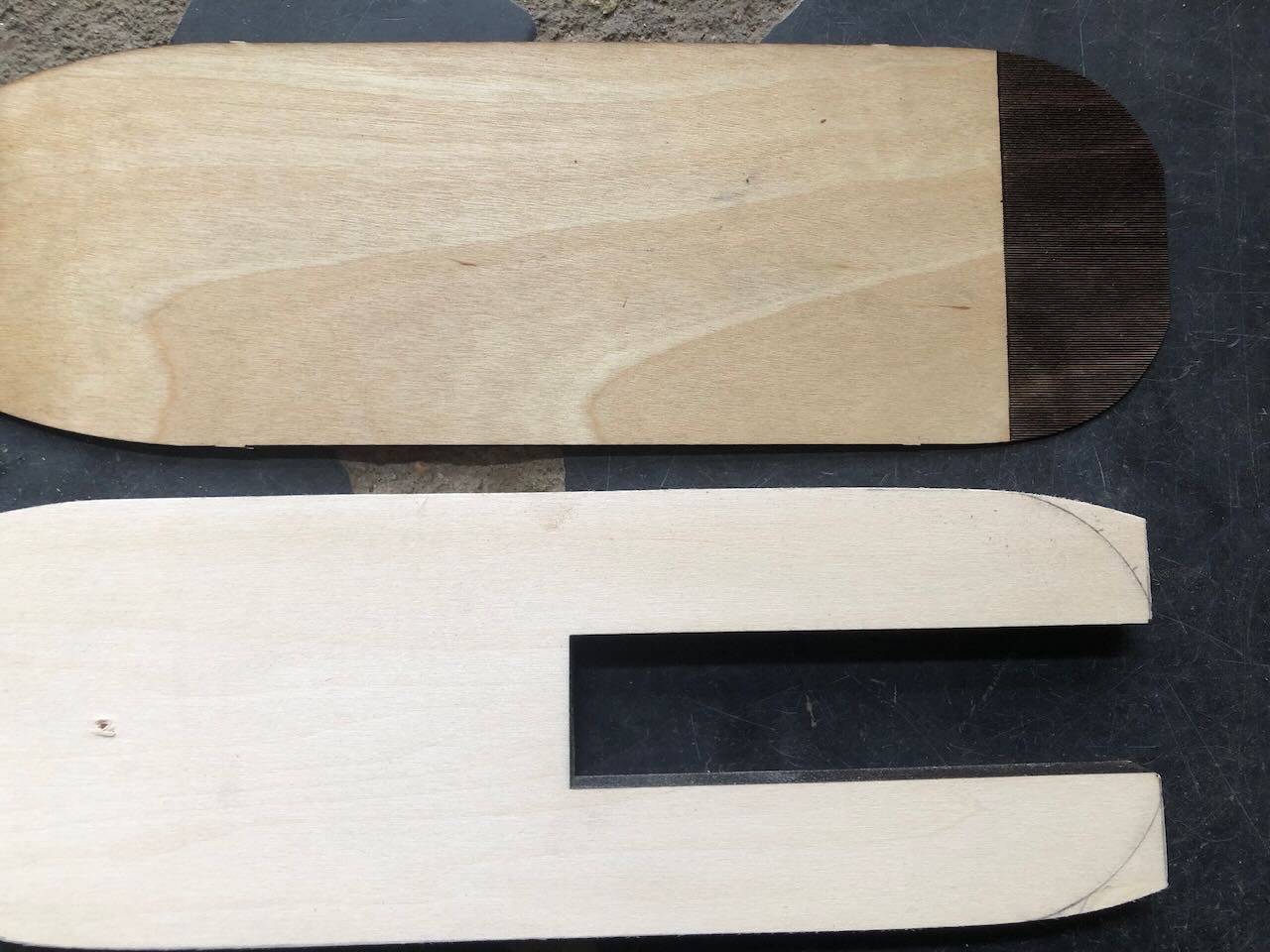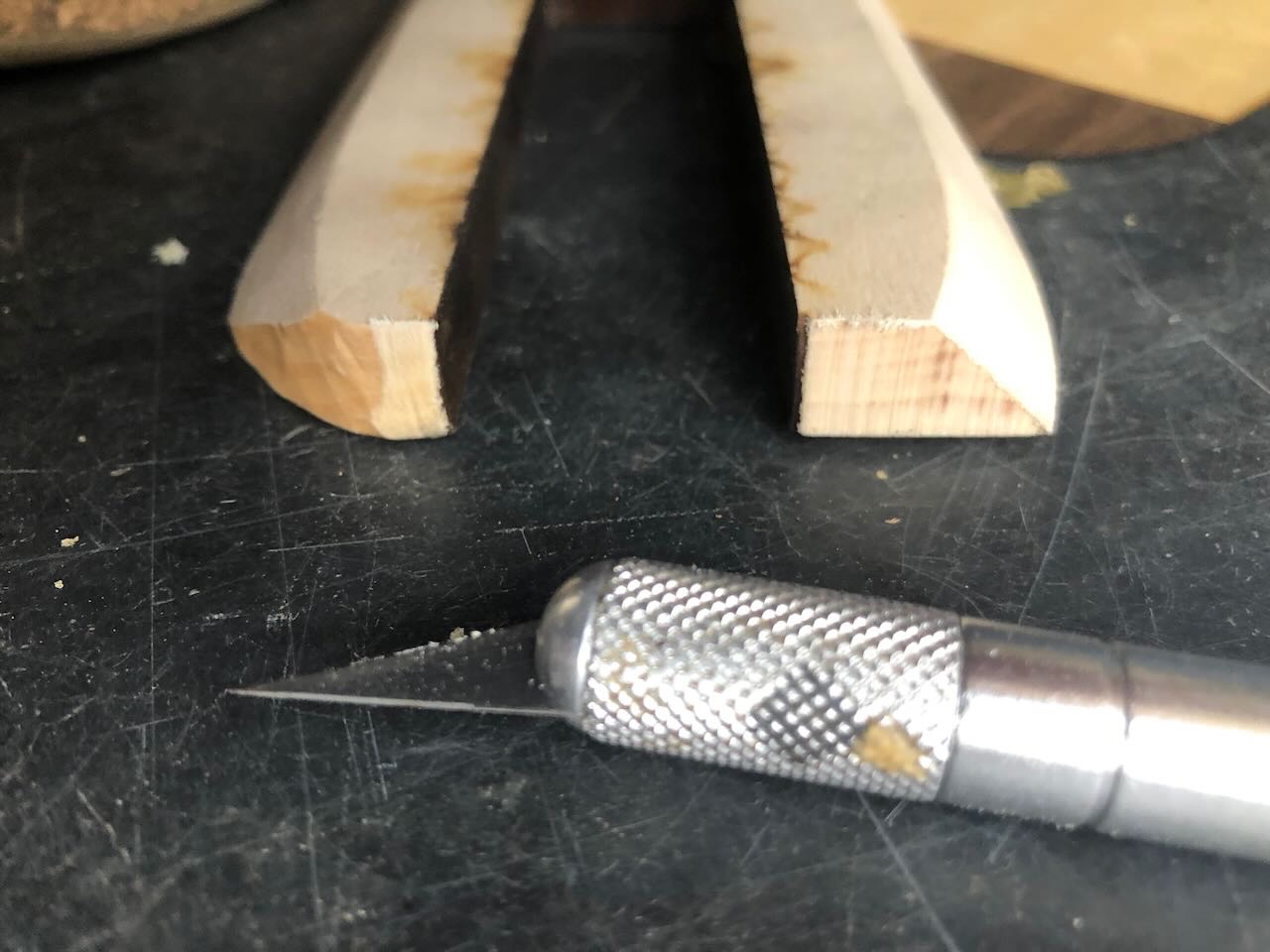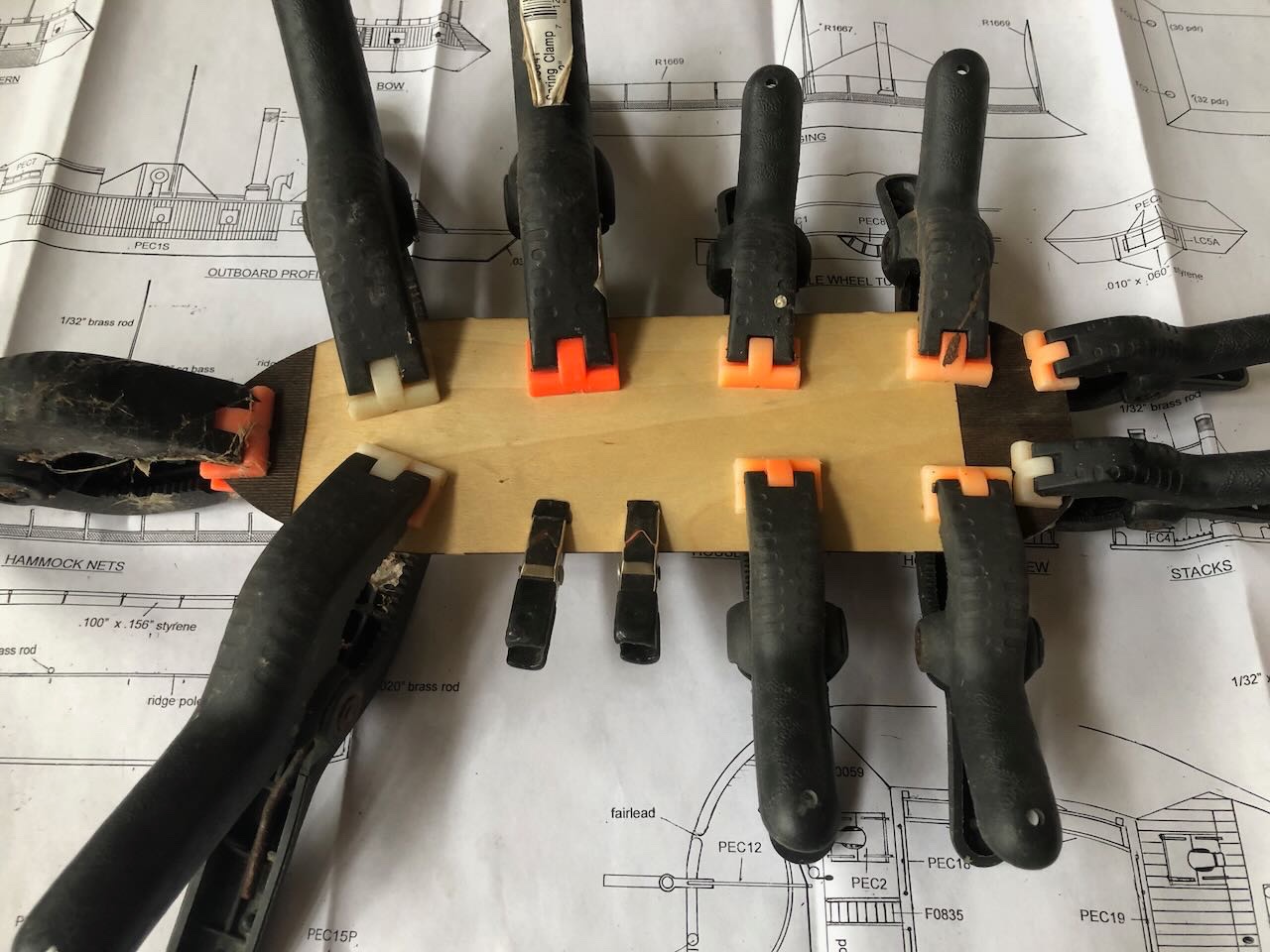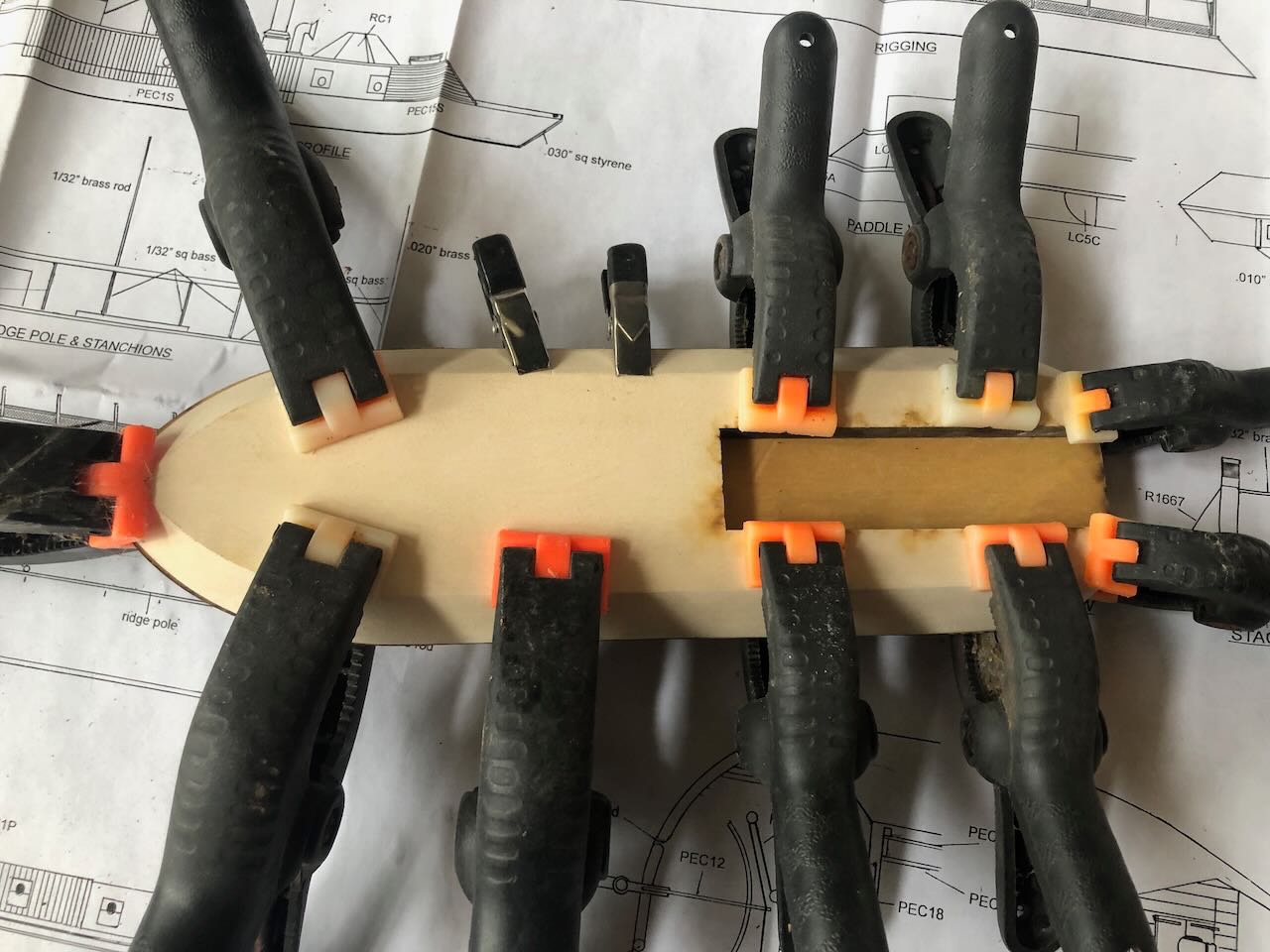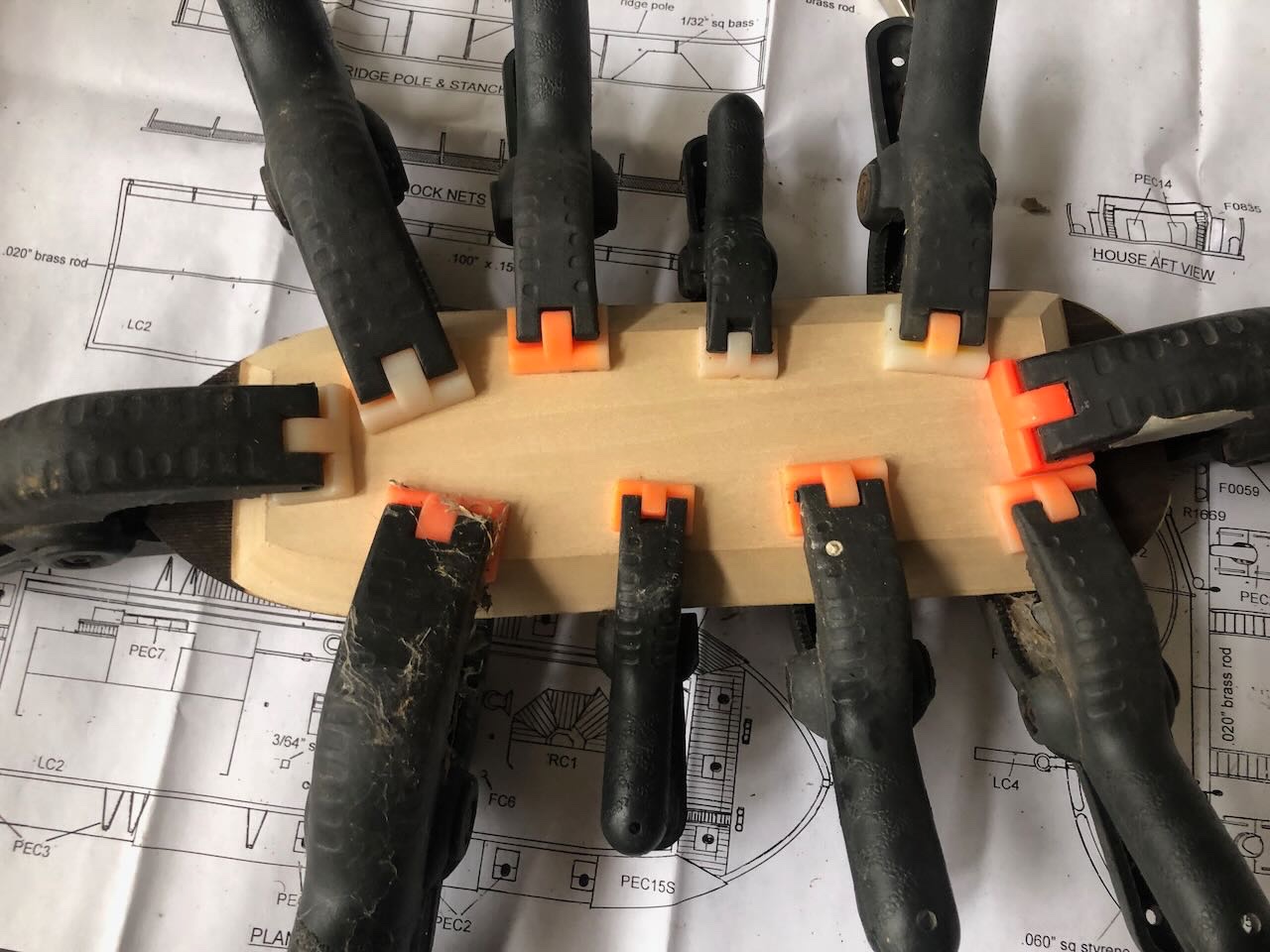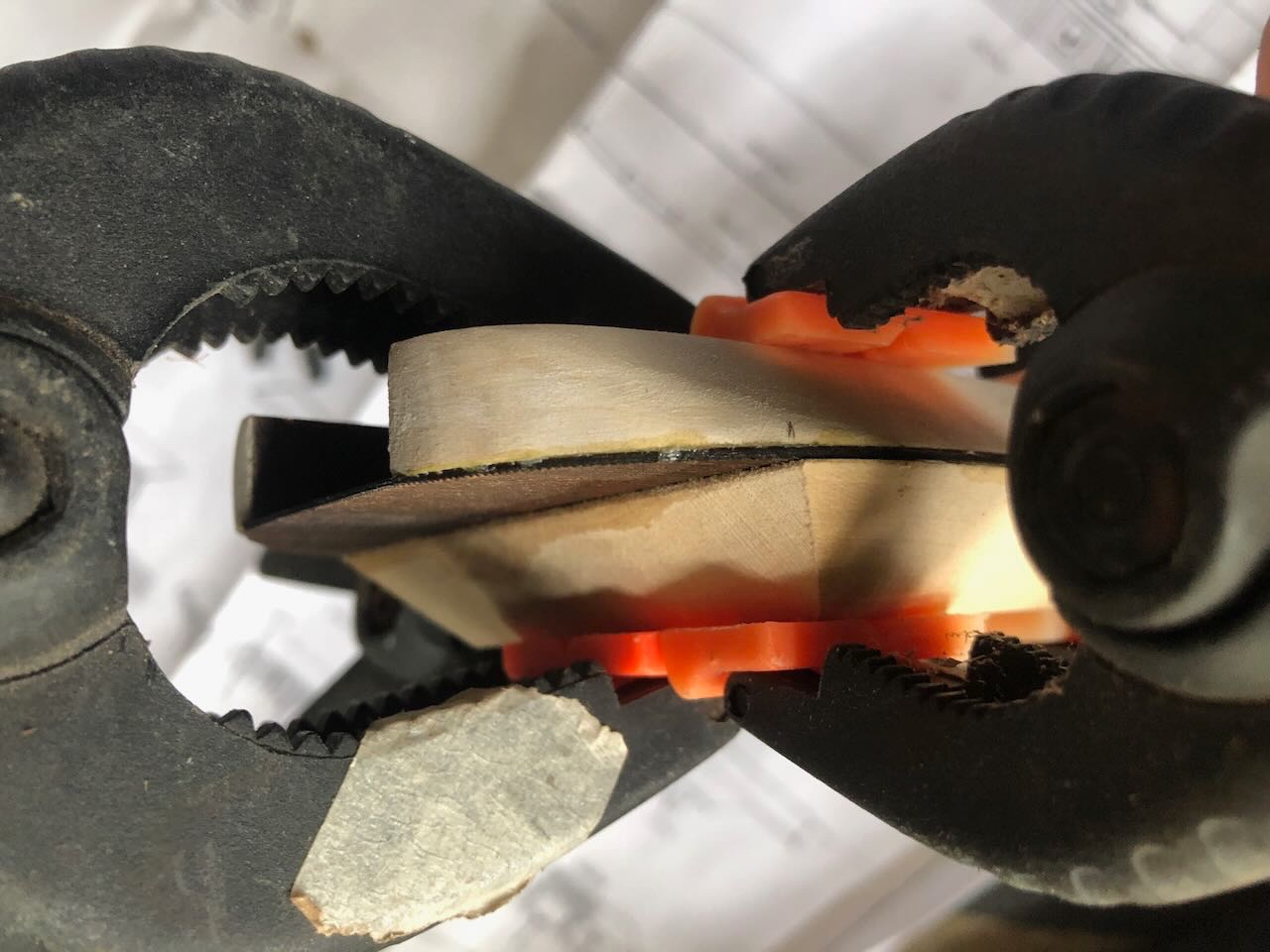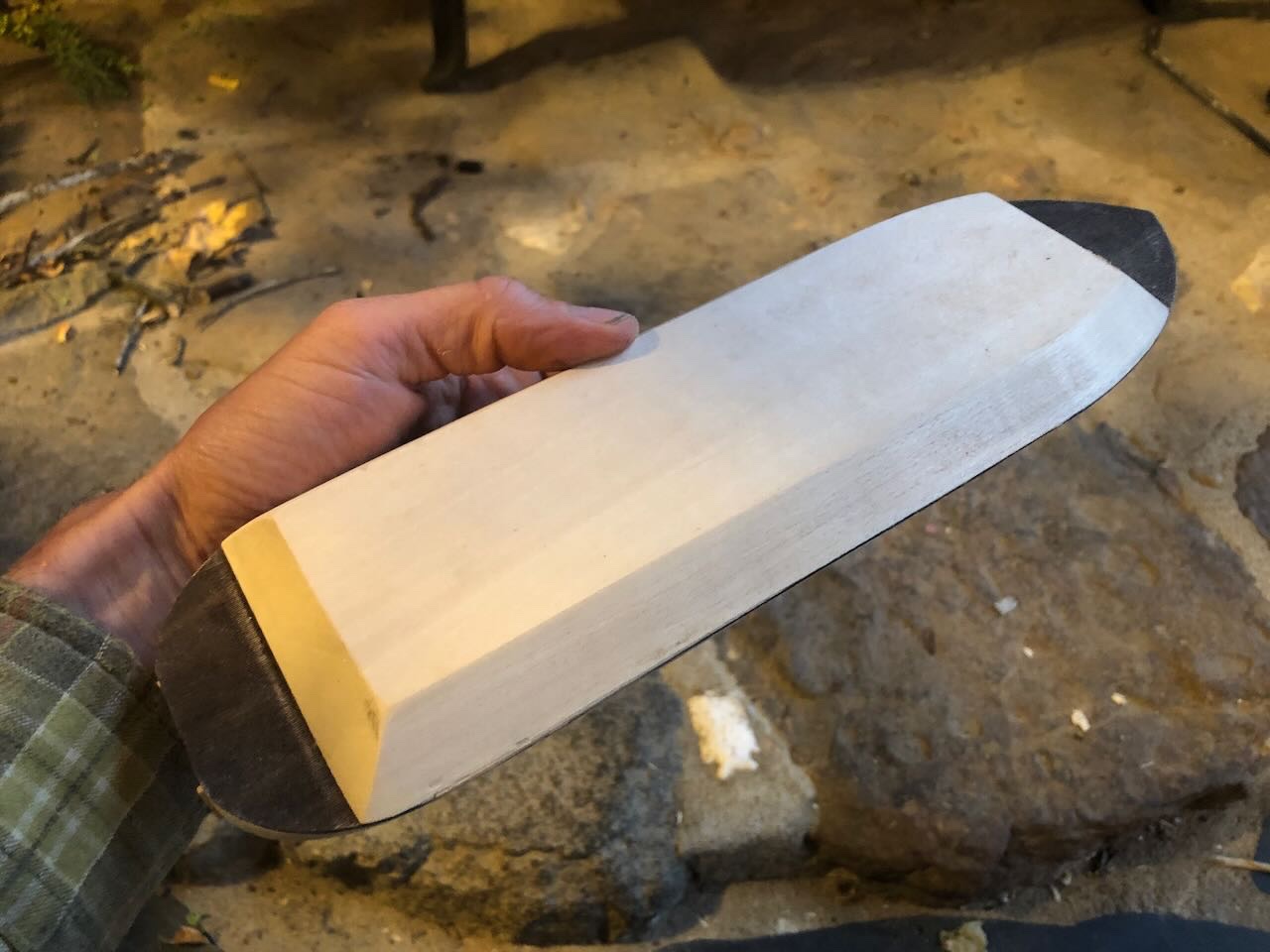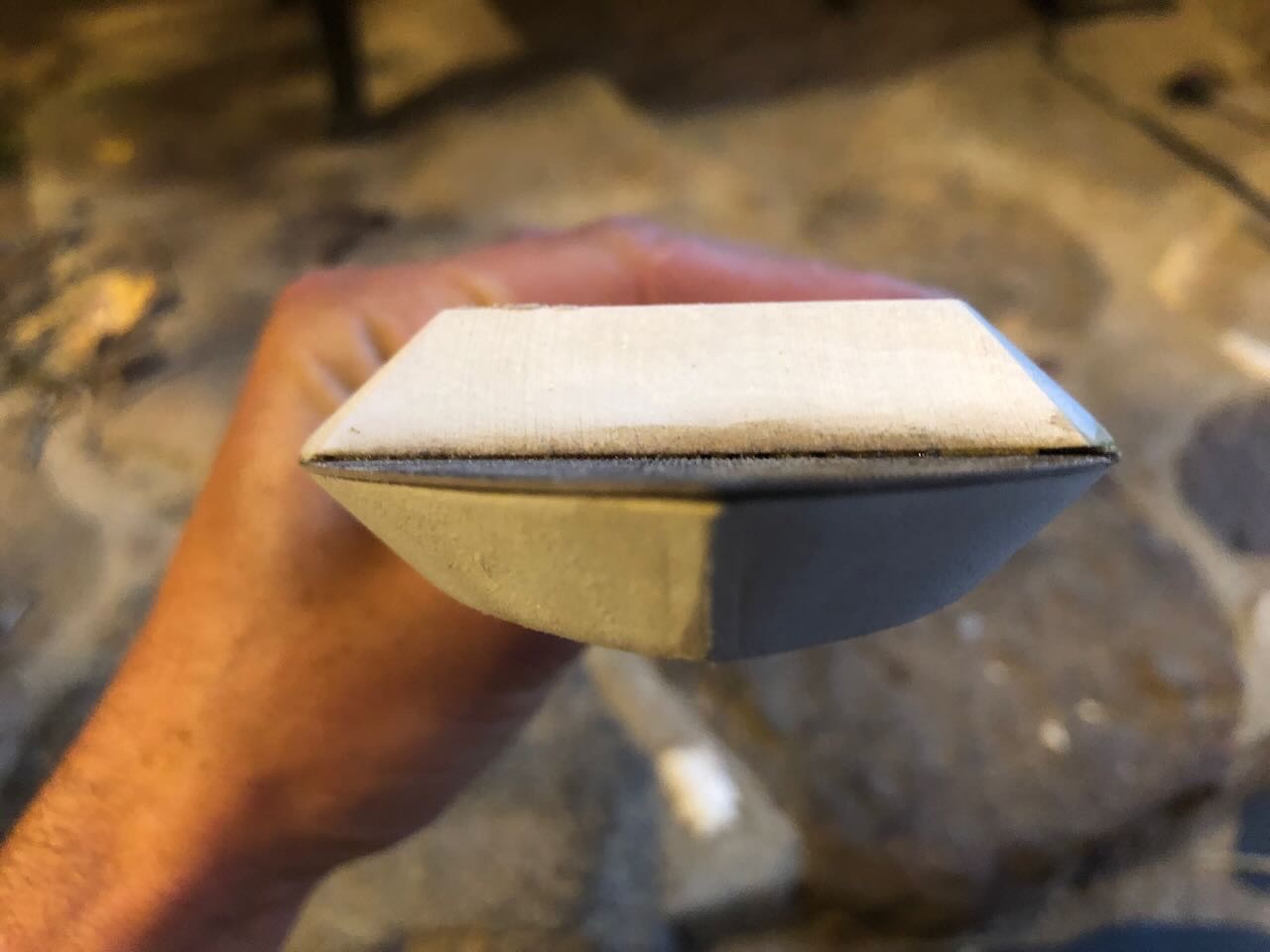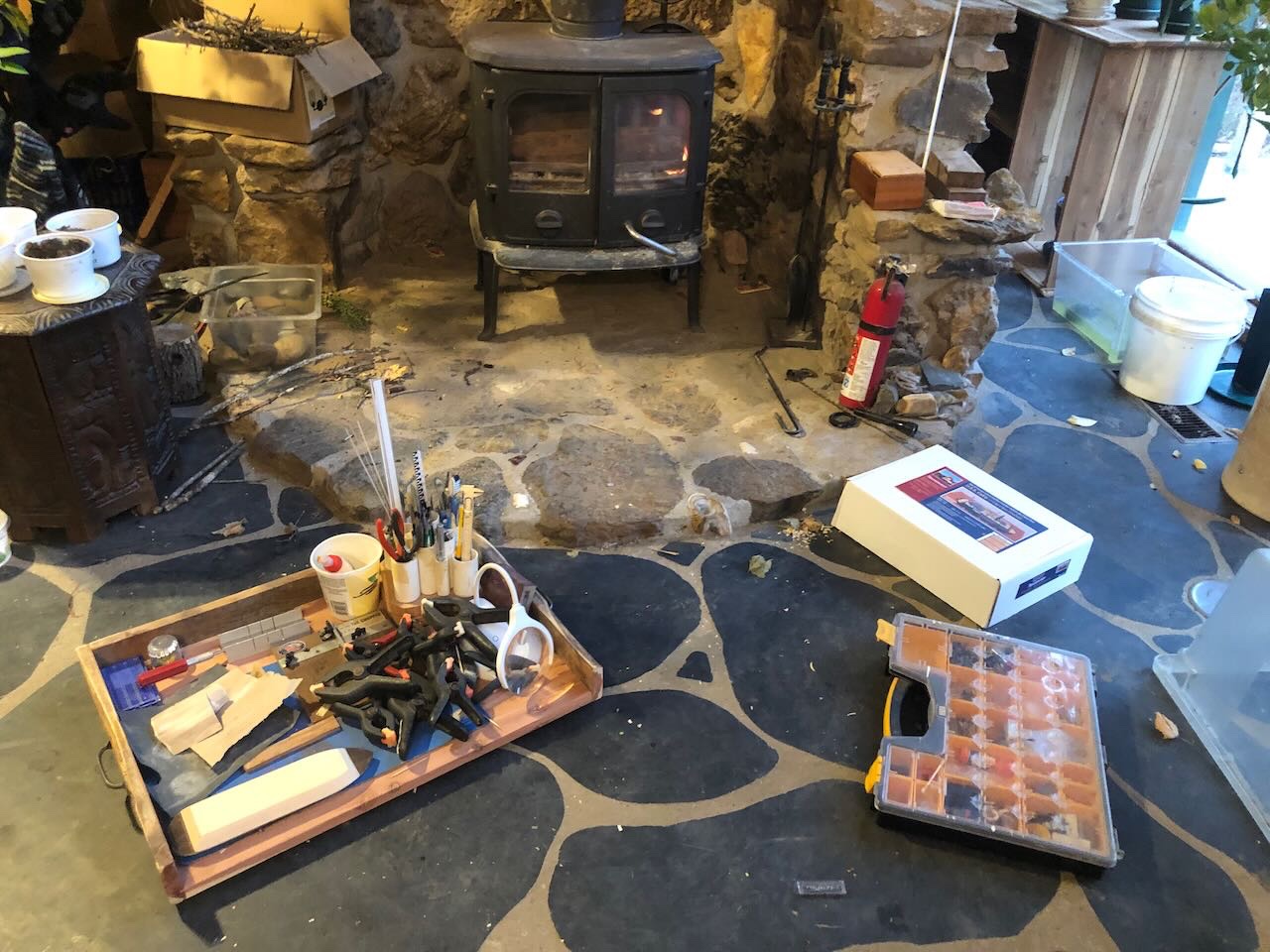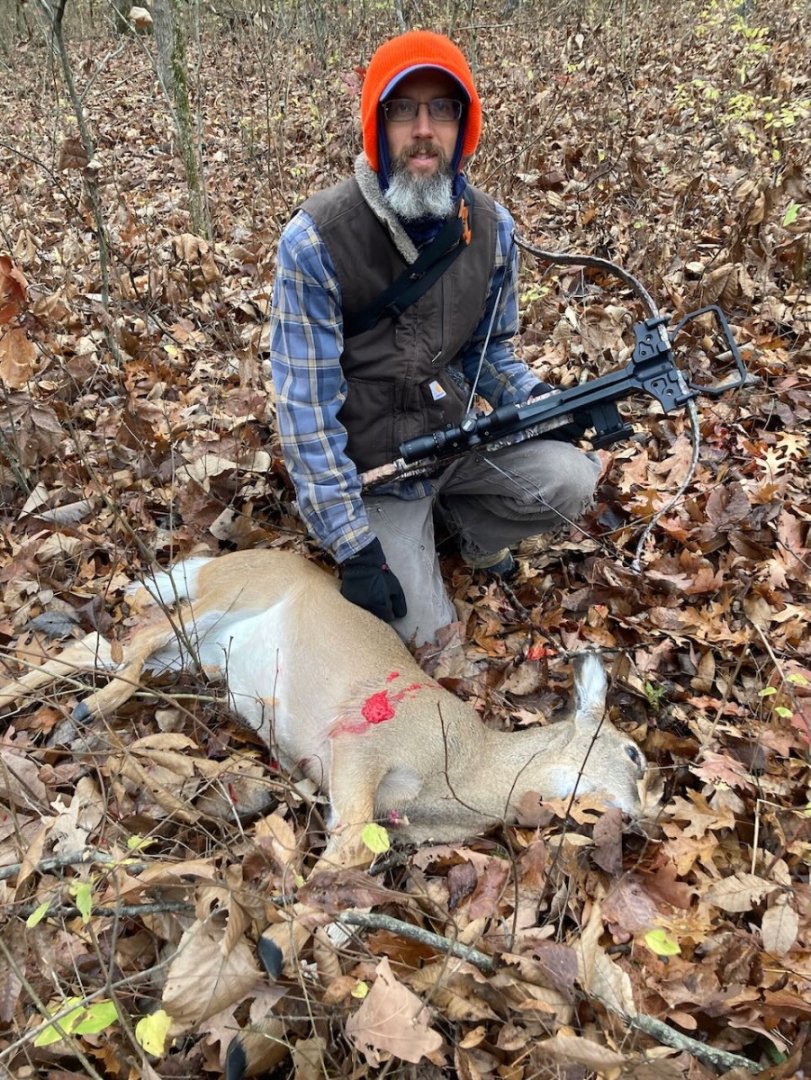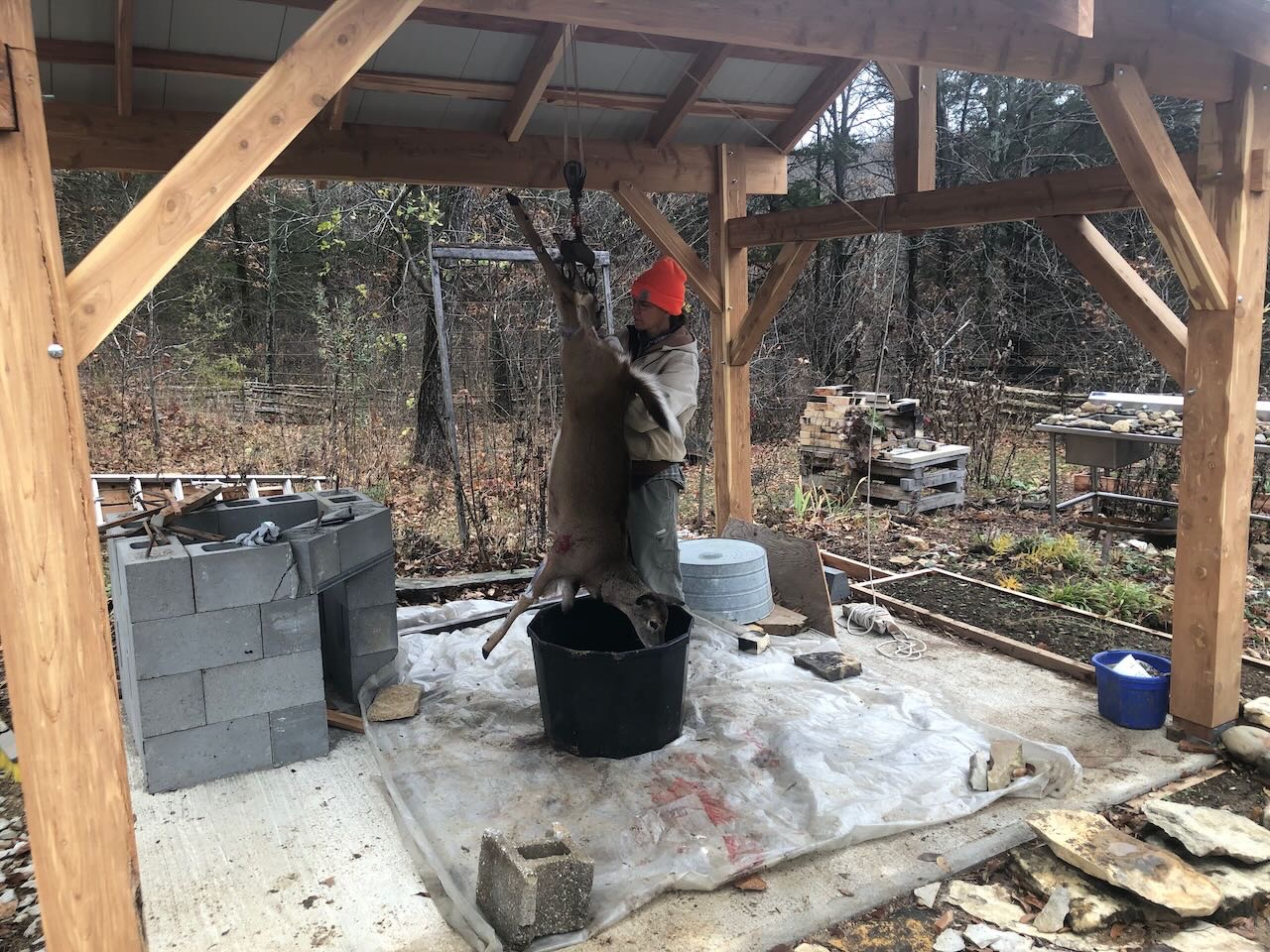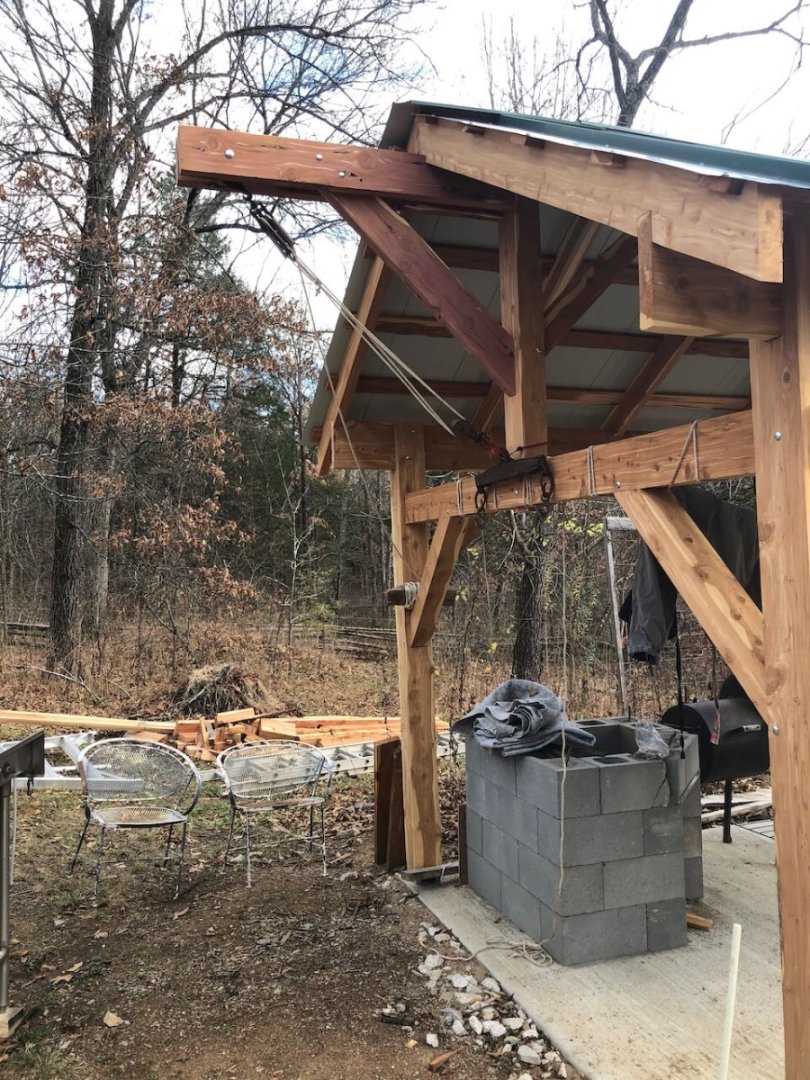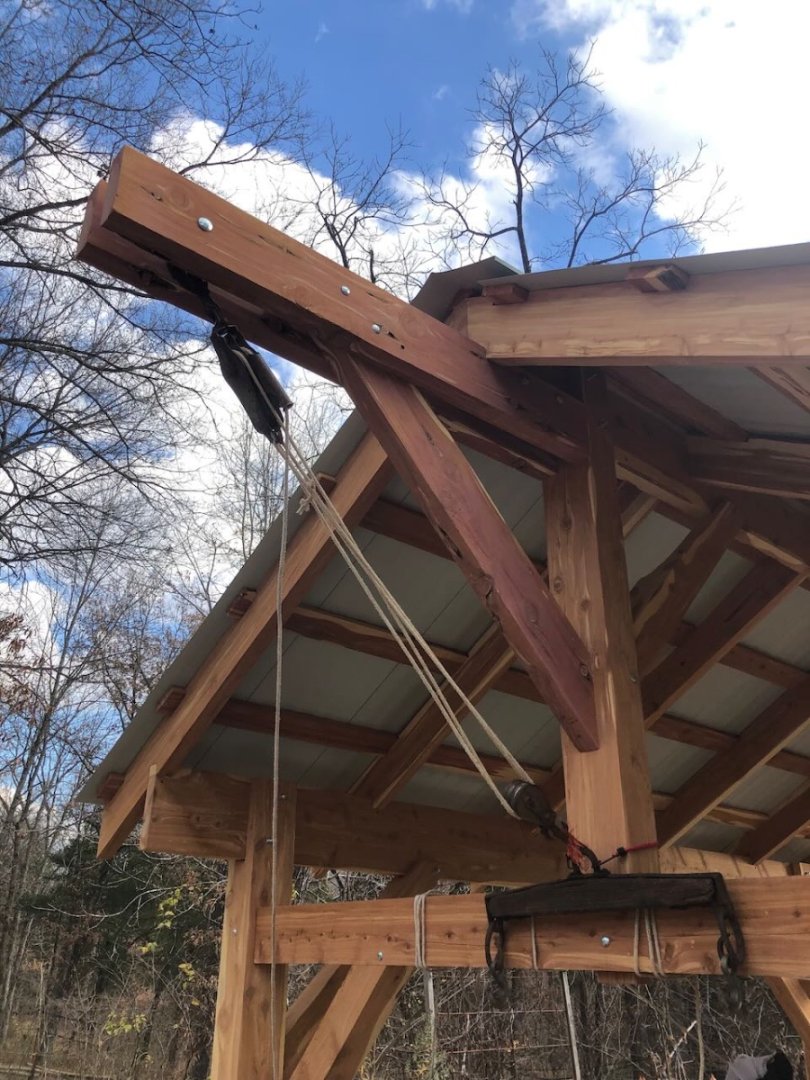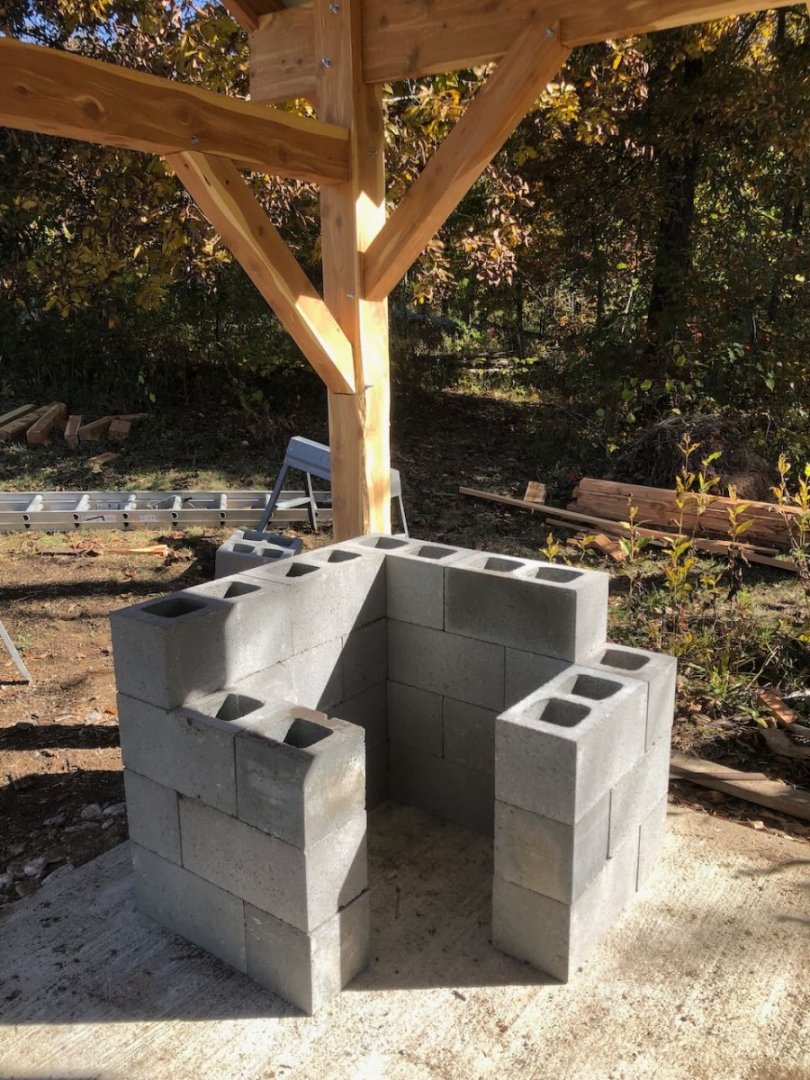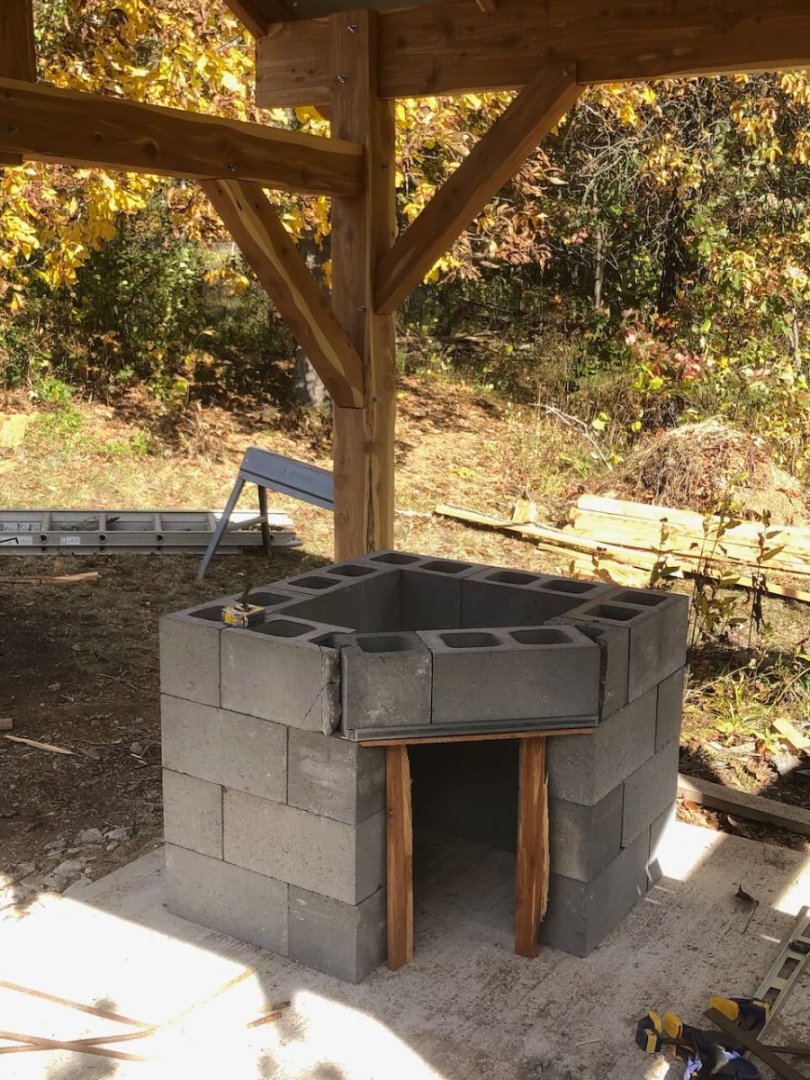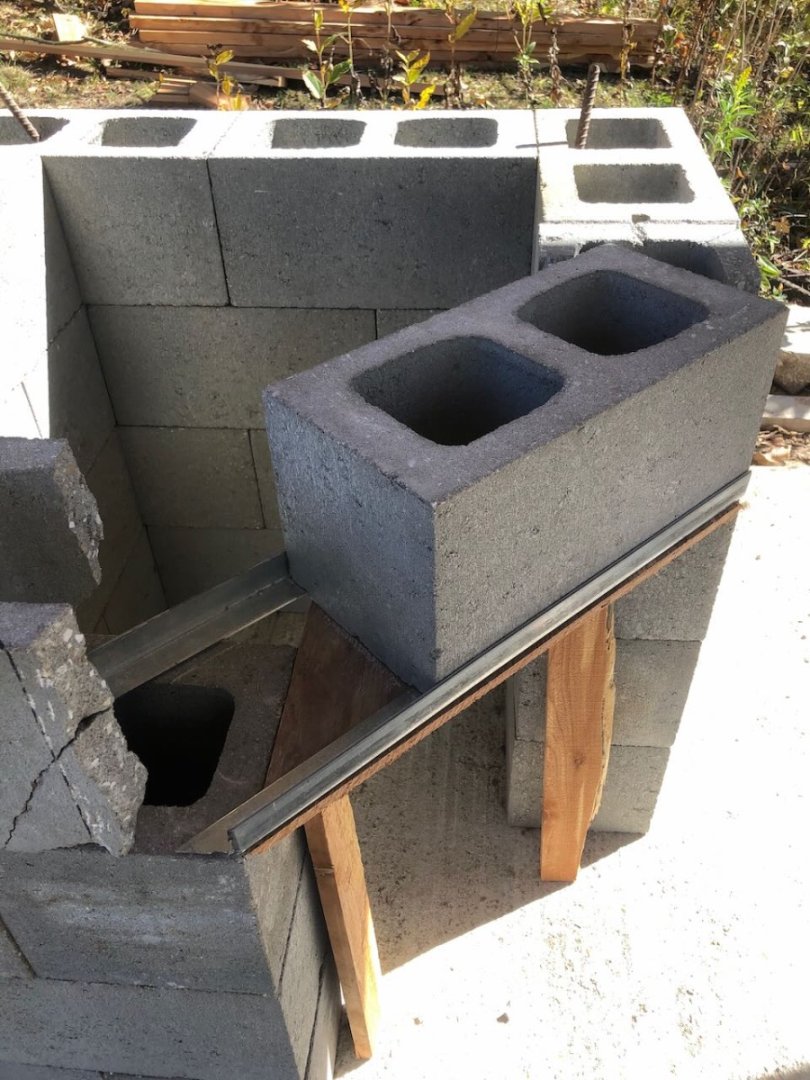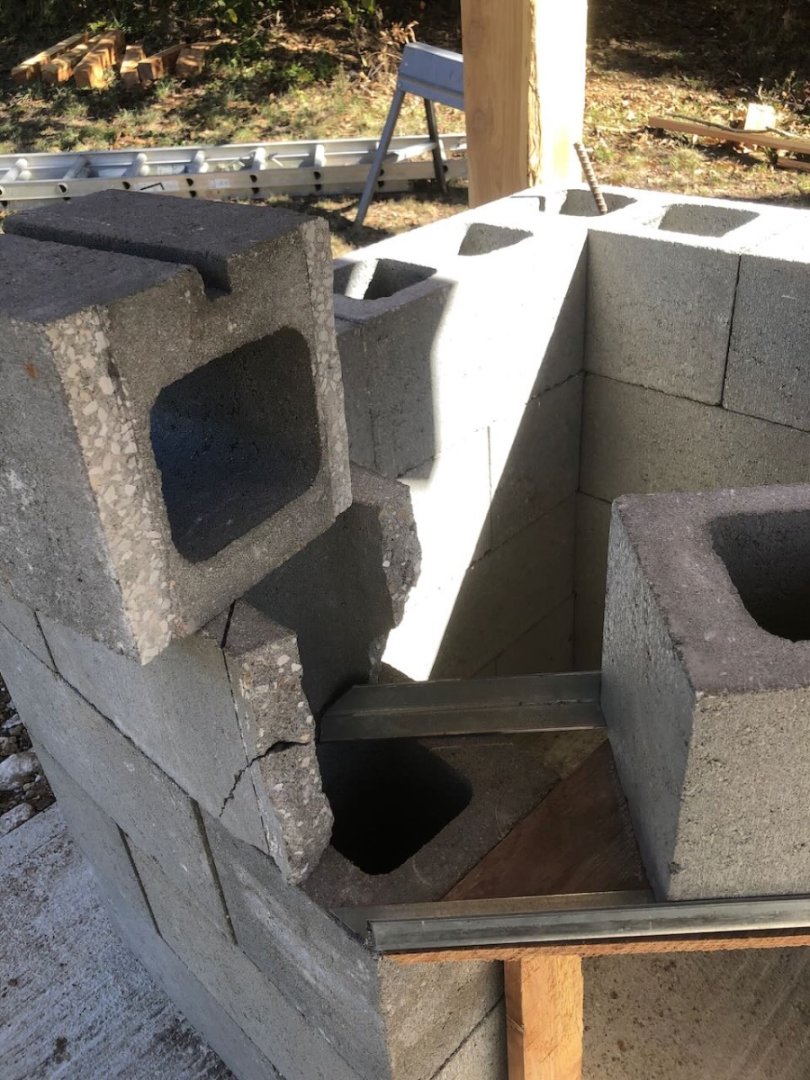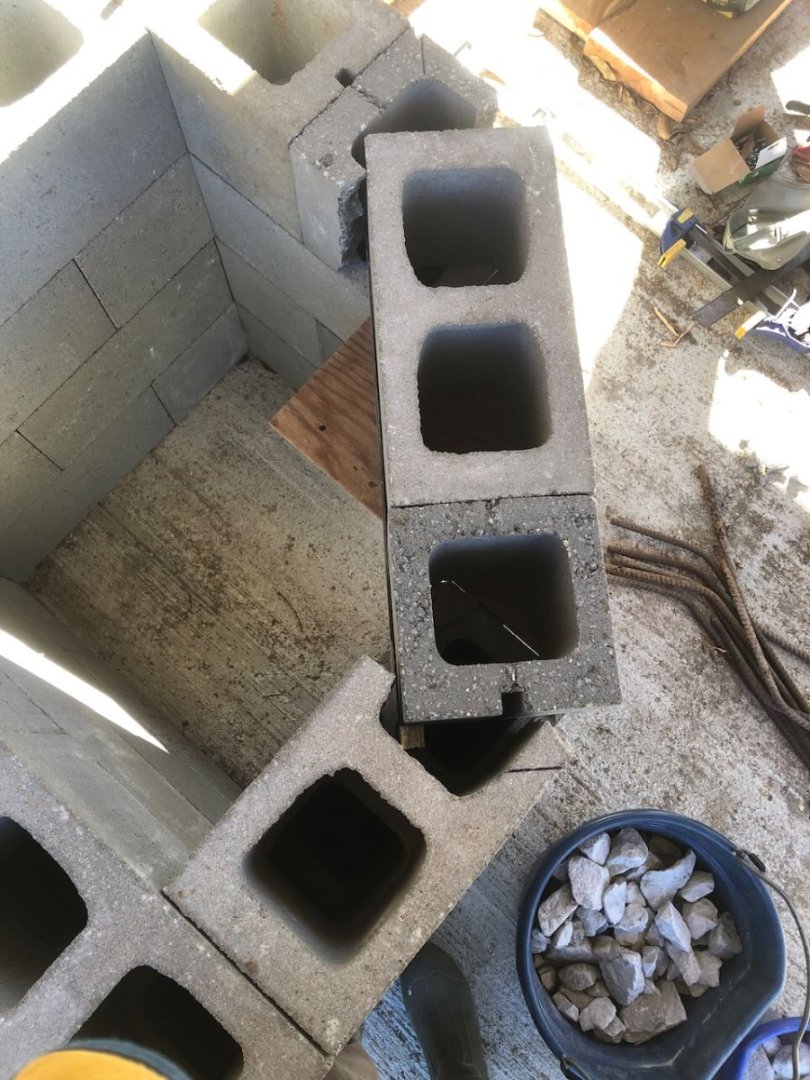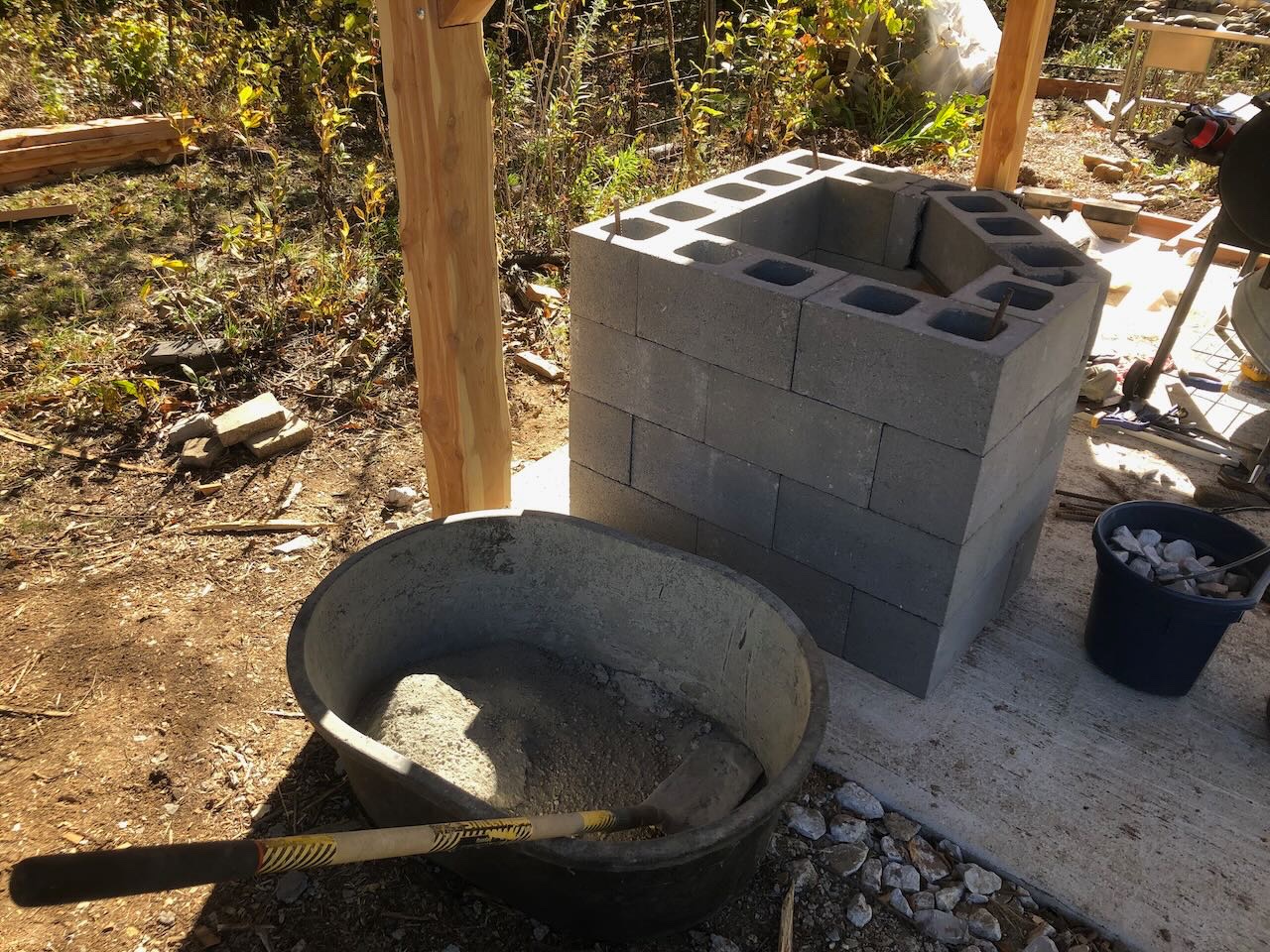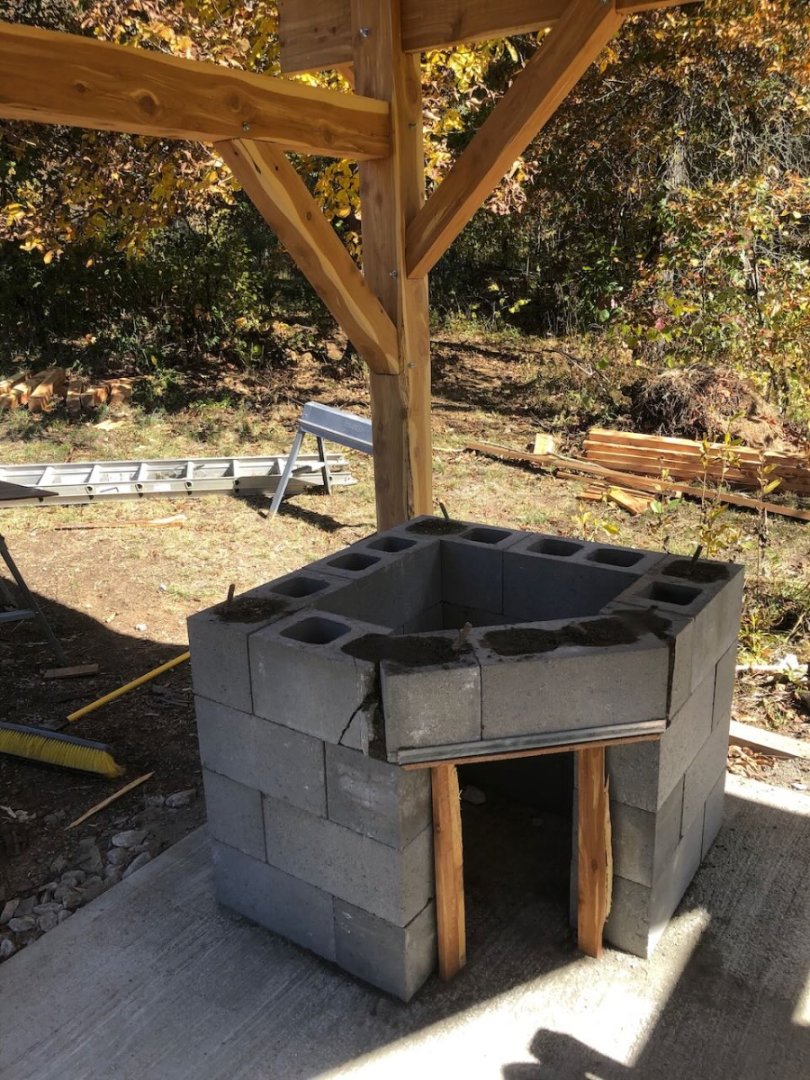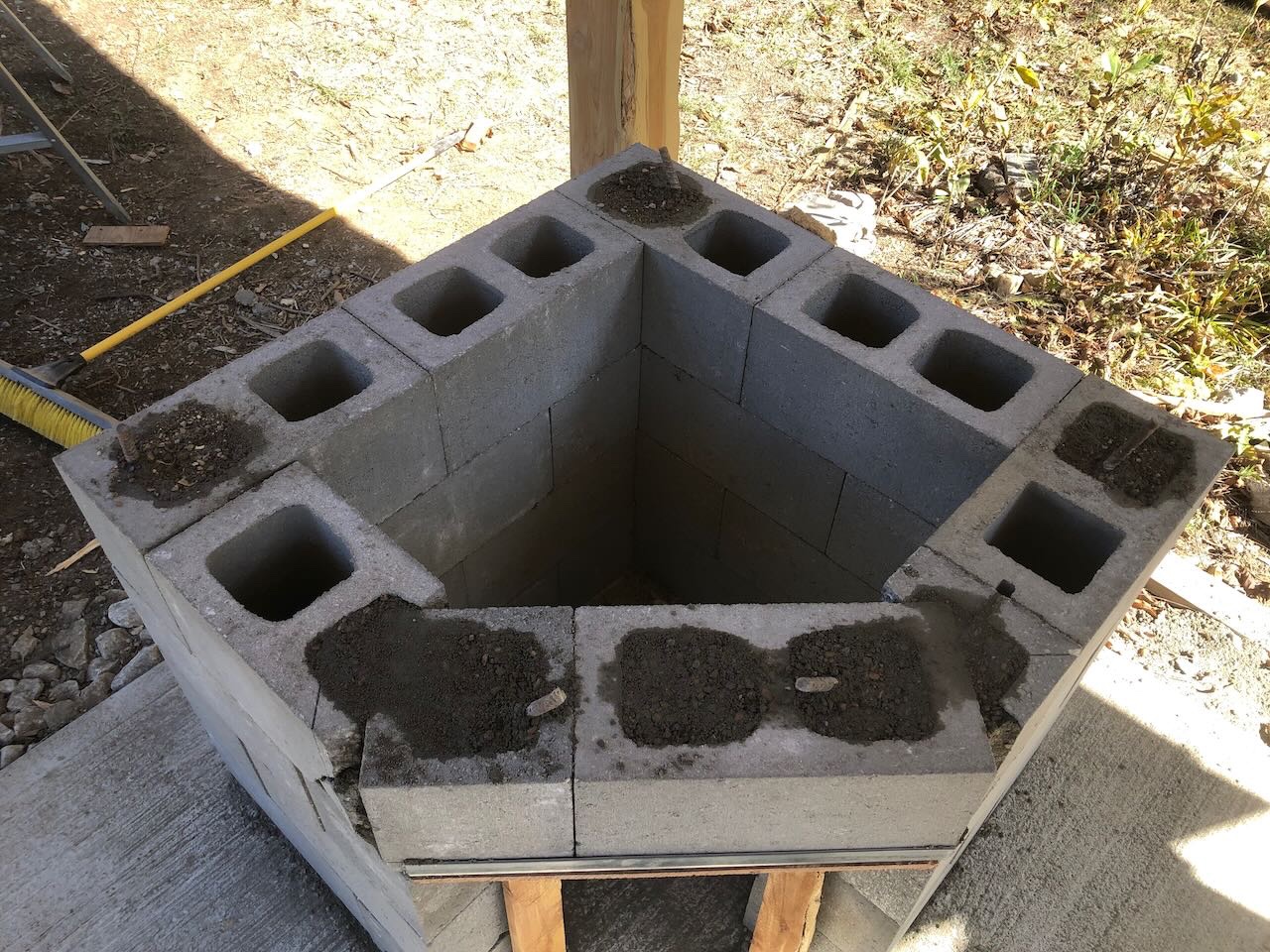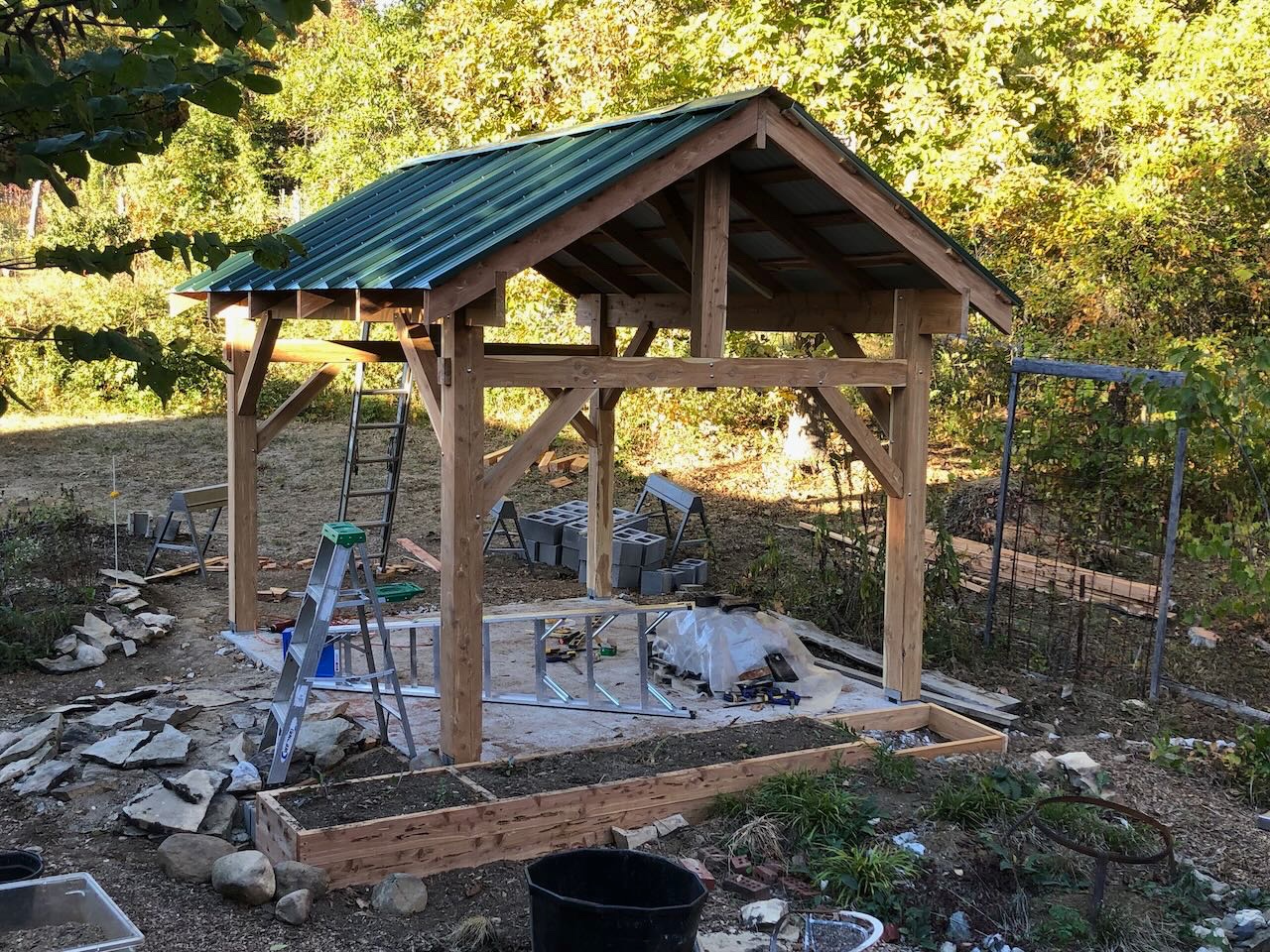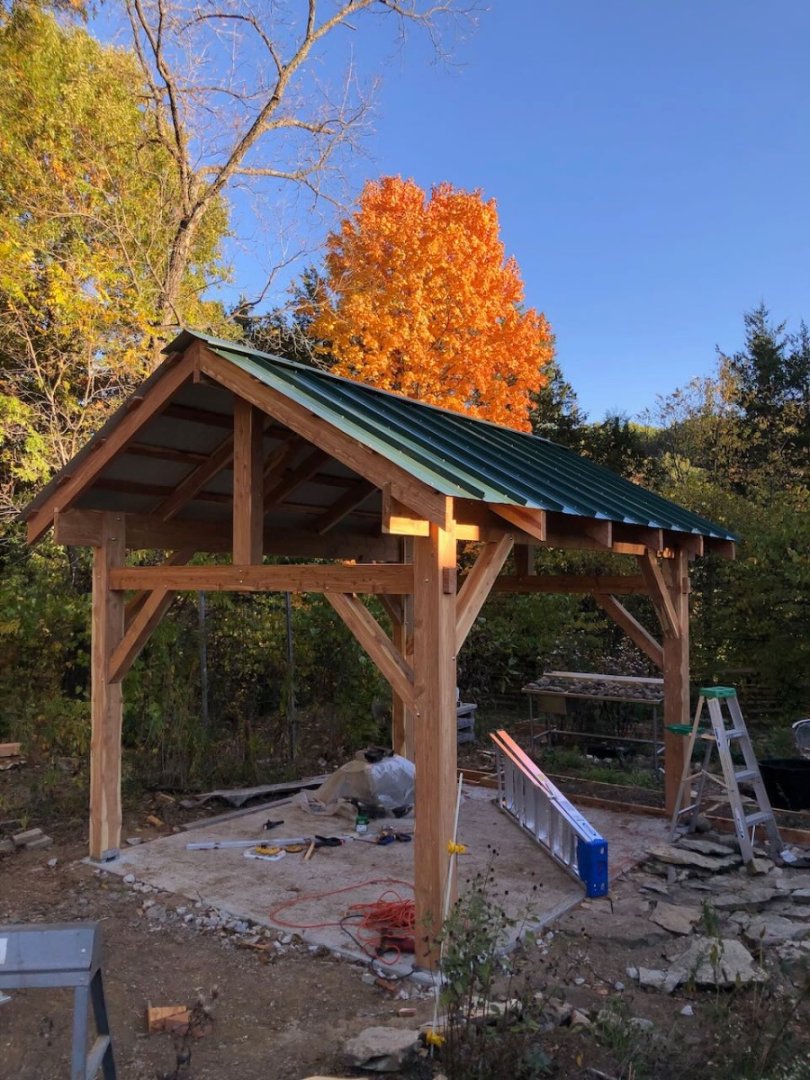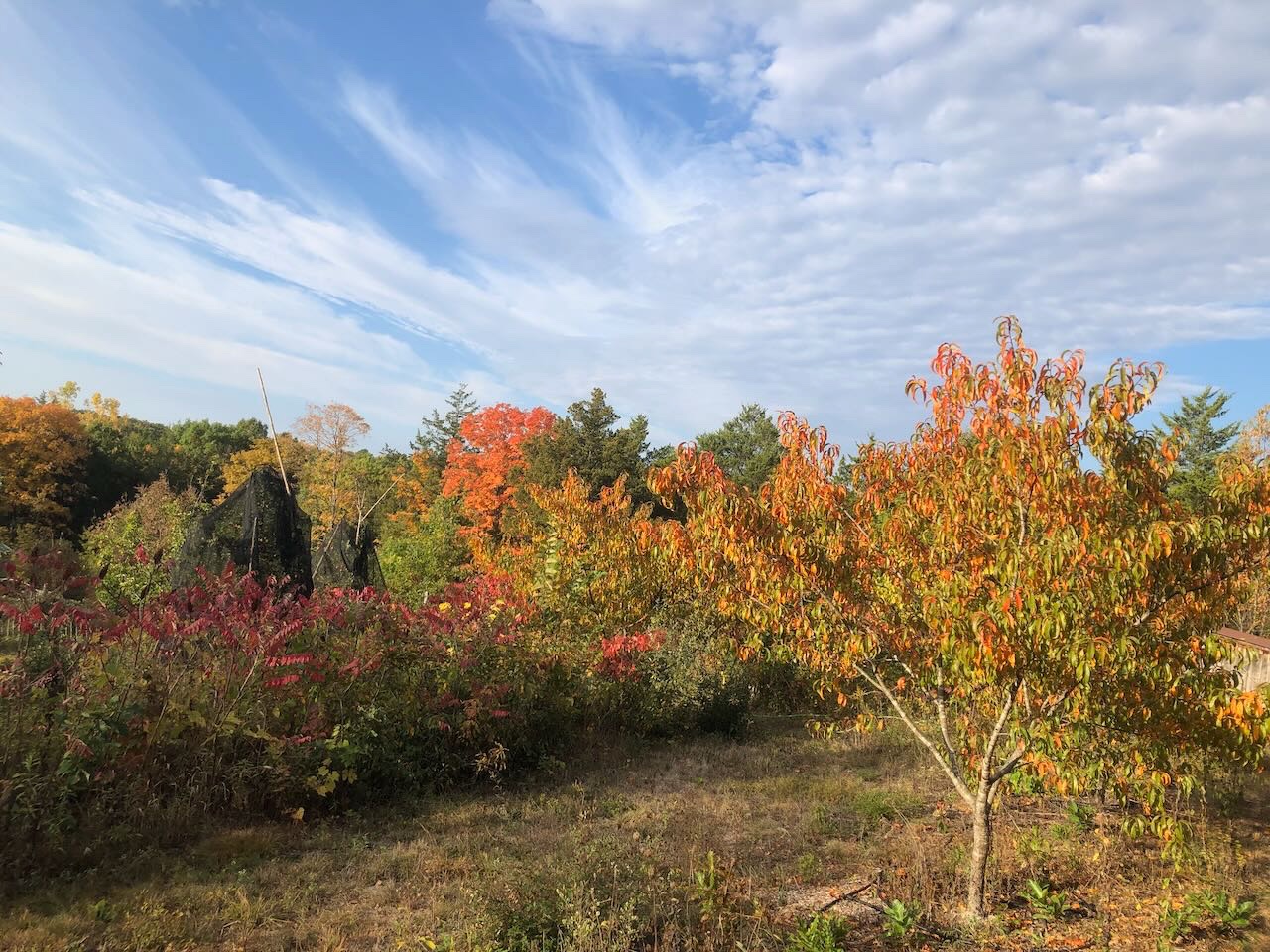-
Posts
3,530 -
Joined
-
Last visited
Content Type
Profiles
Forums
Gallery
Events
Everything posted by Cathead
-
I'd say that the tribute this model represents far outweighs any fleeting disrespect. Especially in a country where outright abuse of the flag code (e.g. clothing) is rampant, especially and ironically among the most self-professed patriotic. Brief rant aside, yet another seminar in modeling. I wonder if your methods for making such a lovely draped flag would be a good fit for a short article in the Nautical Research Journal? We so often see waving flags, so rarely draped ones.
-
Nice job, nice finished presentation. Good to see people continuing to benefit from this kit.
-
Well, I was right about the 3-4 weeks, here it is almost exactly a month since my last post and I finally got back to this project today! It was a quiet, cold day, so I brought out my portable work tray and set up in front of the wood stove. The kit instructions tell you to glue the main deck onto the hull, then glue the casement onto the main deck, all before doing any shaping. I didn't feel comfortable with that, so I traced the deck onto the hull and then did the initial shaping before any gluing. They say to do all the shaping with 220 sandpaper, but given the amount you need to remove from the stern, that seemed unnecessarily fussy, so I used a sharp knife to rough in the shape: I then finished off the smooth curve with sandpaper (forgot to take a photo at this stage). @mbp521 was kind enough to share a detailed set of digital plans with me, and these were invaluable in checking my work since the instructions are very limited and have almost no useful drawings of the intended steps. Honestly, the instructions are rather hard to follow and I've been reading them over and over just to make sure I don't miss or misunderstand something. When I got the hull the way I wanted it, I spread a thin layer of wood glue onto the upper surface and clamped the deck down real good: Once that had set, I did the same with the casement: The bit of spreading wetness you see there is from me using a wet swab to clean up a bit of glue that oozed out. Here's the completed hull-deck-casement assembly, after some more sanding: In the closeup photo I can see a bit of a curve at the lower front of the casement that I might try to level out. Didn't notice it in person, and it'll be covered by armor plating anyway. Not all that much progress, really, but it feels great to be back at work on a model after so long (since last February). Thanks for sticking with me.
- 113 replies
-
- Cairo
- BlueJacket Shipcrafters
-
(and 1 more)
Tagged with:
-

Timber-framed outdoor kitchen - Cathead - 1:1 scale
Cathead replied to Cathead's topic in Non-ship/categorised builds
No progress on the oven. We went on a 16 day camping/hiking trip down into the Ouachita Mountains of central-western Arkansas. The weather in our region was glorious and warm for all of that, would've been perfect for pouring a concrete slab and finishing up the oven, but we weren't home. Then just the other day a major cold front blew through, dropping us from a record high over 80 ºF to below freezing now. Going to be near or below freezing for at least the next 10 days, so all the oven work is on hold. I did get my first deer of the season, allowing us to inaugurate the kitchen building for one of its intended uses, as an improved butchering site. We used to just hang deer from a tree, but were looking forward to hanging (and working) within this structure. Here's me with the harvest and Mrs. Cathead starting on the skinning. However, we decided after this that we needed to change plans. It just isn't going to work to process deer in here once the oven and related grill are built. Not only won't there be much space, but it'll be pretty hard to keep the nicer food-prep surfaces clean when we have to hose off carcasses and so on. In our heads the work space was larger than it is in practice when a big animal is hanging there. Plus it'll be hard to fully clean the floor of drippings and droppings. So I came up with a new solution, influenced by a discussion of ship's boats and davits on @mbp521's beautiful USS Cairo log (discussion starts with this post). I built an extension of the main roof beam that acts like a davit for a block and tackle, that will let us hang carcasses securely from the building, but outside of the main food prep area so mess isn't a problem. This way any mess and wash water just drains into the ground, and we realized we don't really need roof cover because I don't hunt (and thus don't do initial butchering) on rainy/snowy days. At worst we can hang a tarp or sheeting along the side of the kitchen to keep mess away from the cooking areas while processing. And we can always still hang a dressed carcass under cover for a few days if the weather is good, when mess isn't a problem anymore. Notice how I've got the block & tackle secured to the king post using a bungee cord? That was especially influenced by the Cairo discussion regarding whether/how tackles were secured on Civil War ironclads. This way I can leave the gear out without wind whipping it around and tangling it. Now I just need to get another deer! If/when we get a warm spell, oven-building will go back on the agenda. Until then, thanks for reading. -
Fantastic, Brian. One quick thought on the tackles: for processing deer and other livestock, I use a singletree hooked to a block & tackle that allows me to raise and lower the animal easily. During deer season I leave this hanging so it's ready to use. However, I find that wind easily whips the tackle around and tangles it, creating an annoying task that I never get to until there's a carcass waiting below. These ironclads may never have encountered rough seas, but they sure as heck encountered high and whipping winds, and I'd suspect those tackles would get badly whipped around and tangled if left hanging like that. It's possible that could even cause damage; imagine a wooden block repeatedly slamming against an iron pole in gusty winds. And I think even a brown-water Navy vessel would want those boats quickly deployable. So I think I'd suggesting finding a way to secure the lower end of those tackles somehow, to prevent wind-blown damage or tangling. For example, maybe a line or chain on the hook that draws back to a cleat or ring on the actual deck; this would also make it easier for crew to get to the tackle when needed (imagine climbing out onto that structure to grab onto a loose heavy block that's swinging around in the wind). Wefalck's idea of something that runs through the tarp could also be good, though I'm not sure how that works in a waterproof fashion. Remember "loose lips sink ships"? How about "loose blocks create knocks"? Just a thought, you're welcome to reject. It's easy for the peanut gallery to suggest more work on someone else's model!
-
I built this a few years ago as a gift for my mother, who loves Maine, and it came out great. I didn't do a build log but did write a review after the fact, which might be of interest and use. Looking forward to seeing what you do with this kit.
- 20 replies
-
- Maine Lobster Boat
- BlueJacket Shipcrafters
-
(and 1 more)
Tagged with:
-
Good start, I did this a while back and it was a useful project.
- 4 replies
-
- half hull planking project
- NRG
-
(and 1 more)
Tagged with:
-
If you like steamboat art, check out Gary Lucy as well. I've found some detail oddities in his work, but the art itself is quite attractive and evocative.
- 238 replies
-
- Robert E Lee
- steamboat
- (and 3 more)
-
Have to add to the chorus of praise. That's superb and will be a fantastic model to gaze on for years to come. I remember admiring the built version of this kit at BlueJacket when I visited years ago, and it's really cool to see it competed so beautifully.
-
Catching up after 2 weeks away, nice progress and problem solving!
- 158 replies
-
- chaperon
- Model Shipways
-
(and 1 more)
Tagged with:
-

Timber-framed outdoor kitchen - Cathead - 1:1 scale
Cathead replied to Cathead's topic in Non-ship/categorised builds
Made a start on the pizza oven itself. First step was to build a concrete block foundation, over which a concrete hearth will be poured to support the oven itself. Loose-stacking blocks in the basic shape: Adding the angled support over the front gap. This allows access to the interior for firewood storage: Closeups of how I built the overhang. Two parallel steel angles spanning the gap, with concrete blocks set onto them: I ground away a notch on either side of the blocks so they'd sit on the steel angles with their tops flush with the other blocks: Overhead view. I carefully broke another block to fill the angle on either side: Next, I filled each corner with concrete, inserting rebar. These stick up a few inches to help anchor the hearth onto the foundation: It'll be a few weeks before I'm able to pour the hearth. Not only will I be very busy, but we need a stretch of warm weather for the hearth concrete to set properly. Look for more updates in mid-November, hopefully. Thanks for reading! -
Yeah, I've been there on tasks that just. will. not. go. right. Well done to persist through. I like the rudder boxes, too, as you say they're good at fooling the eye into belonging there.
- 158 replies
-
- chaperon
- Model Shipways
-
(and 1 more)
Tagged with:
-
Great to see your interest in understanding how things actually worked, I'm the same way. Can't just build blind, want to actually understand.
-
So I feel I owe an apology to all those who have signed up for this: I'm afraid I jumped the gun in starting this log. I thought I'd find more time to work on the project but it's just not happening. Given my upcoming schedule I don't think I'll be able to work on it until sometime in November. Very sorry to bait-and-switch; I'm disappointed too! But I think I'll do a better job if I can actually focus on it, and right now (and through the next 3-4 weeks) there's just too much else going on for that to happen.
- 113 replies
-
- Cairo
- BlueJacket Shipcrafters
-
(and 1 more)
Tagged with:
-

Timber-framed outdoor kitchen - Cathead - 1:1 scale
Cathead replied to Cathead's topic in Non-ship/categorised builds
The roof is on! I would have updated this last night, but after finishing the roof I went up to harvest pears in our orchard and was stung on my left palm by a yellow jacket. The hand swelled up badly and felt like someone had driven a nail through it. Even this morning it's mostly unusable, being painful, stiff, and curled into a claw-like form. It's not getting any worse and should go down over the next day or two, but it's making me frustratingly impaired right now. Same hand as my last injury, so lots of unwelcome deja vu. In theory my next step is to add gutters but that'll have to wait now since I have no grip strength in one hand. So in lieu of any updates on that front, here's a photo of the offending pears and a wider shot of more fall colors from the upper orchard. The near tree is a peach, and the pear and apple trees are mostly obscured behind a line of sumac. If you look closely you can see the huge teepees of bird netting that are required to get fruit to harvest here; birds destroyed hundreds of pears before we finally wrapped the trees (an awful job on a very muggy late summer day). Thanks for following along. -
@rcmdrvr I think I found the source of your problem. Reading ahead in the instructions, at your stage (page 8 ) they have you pre-drill mounting holes for the cannon, 1/4" deep as you said, but they don't say anything about mounting the cannon at this time. They're just getting the hull ready for later detailing. You don't actually mount the cannon until page 16, where it says "trim [the cannon] as necessary so that the bottom of the muzzle protrudes about 1/8" from the casement, and glue it in place". This makes sense as mounting the cannon this early is just asking for them to get knocked askew during other early building. It would probably have been good for the instructions to clarify that the cannon don't get added at this step, but it's also a good idea to read all directions first! It also doesn't hurt to keep checking against the box imagery and other photos, like doing a puzzle, to make sure things seem right. We've all been there, it's no big deal. Is it possible to remove the cannon and trim them down for later re-installment?
About us
Modelshipworld - Advancing Ship Modeling through Research
SSL Secured
Your security is important for us so this Website is SSL-Secured
NRG Mailing Address
Nautical Research Guild
237 South Lincoln Street
Westmont IL, 60559-1917
Model Ship World ® and the MSW logo are Registered Trademarks, and belong to the Nautical Research Guild (United States Patent and Trademark Office: No. 6,929,264 & No. 6,929,274, registered Dec. 20, 2022)
Helpful Links
About the NRG
If you enjoy building ship models that are historically accurate as well as beautiful, then The Nautical Research Guild (NRG) is just right for you.
The Guild is a non-profit educational organization whose mission is to “Advance Ship Modeling Through Research”. We provide support to our members in their efforts to raise the quality of their model ships.
The Nautical Research Guild has published our world-renowned quarterly magazine, The Nautical Research Journal, since 1955. The pages of the Journal are full of articles by accomplished ship modelers who show you how they create those exquisite details on their models, and by maritime historians who show you the correct details to build. The Journal is available in both print and digital editions. Go to the NRG web site (www.thenrg.org) to download a complimentary digital copy of the Journal. The NRG also publishes plan sets, books and compilations of back issues of the Journal and the former Ships in Scale and Model Ship Builder magazines.




